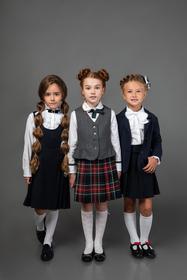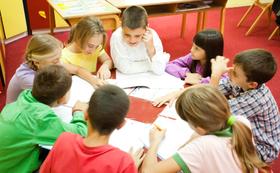Top Rankings
Fridley Public School District ranks among the top 20% of public school district in Minnesota for:
Category
Attribute
Diversity
Most diverse schools (Top 1%)
Community Size
Largest student body (number of students) (Top 1%)
For the 2025-26 school year, there are 4 public preschools serving 1,047 students in Fridley Public School District. This district's average pre testing ranking is 2/10, which is in the bottom 50% of public pre schools in Minnesota.
Public Preschools in Fridley Public School District have an average math proficiency score of 40% (versus the Minnesota public pre school average of 46%), and reading proficiency score of 32% (versus the 47% statewide average).
Minority enrollment is 72% of the student body (majority Black), which is more than the Minnesota public preschool average of 42% (majority Hispanic and Black).
Overview
This School District
This State (MN)
# Schools
11 Schools
722 Schools
# Students
2,633 Students
214,815 Students
# Teachers
174 Teachers
16,916 Teachers
Student-Teacher Ratio
14:1
14:1
Student By Grade
District Rank
Fridley Public School District, which is ranked within the bottom 50% of all 520 school districts in Minnesota (based off of combined math and reading proficiency testing data) for the 2022-2023 school year.
The school district's graduation rate of 78% has decreased from 81% over five school years.
Overall District Rank
#401 out of 525 school districts
(Bottom 50%)
(Bottom 50%)
Math Test Scores (% Proficient)
29%
46%
Reading/Language Arts Test Scores (% Proficient)
33%
51%
Science Test Scores (% Proficient)
17%
41%
Graduation Rate
78%
84%
Students by Ethnicity:
Diversity Score
0.75
0.63
% American Indian
1%
2%
% Asian
8%
7%
% Hispanic
18%
13%
% Black
38%
13%
% White
25%
58%
% Hawaiian
n/a
n/a
% Two or more races
10%
7%
All Ethnic Groups
District Revenue and Spending
The revenue/student of $21,076 is higher than the state median of $17,860. The school district revenue/student has grown by 10% over four school years.
The school district's spending/student of $18,998 is higher than the state median of $18,585. The school district spending/student has grown by 10% over four school years.
Total Revenue
$56 MM
$15,547 MM
Spending
$50 MM
$16,179 MM
Revenue / Student
$21,076
$17,860
Spending / Student
$18,998
$18,585
Best Fridley Public School District Public Preschools (2025-26)
School
(Math and Reading Proficiency)
(Math and Reading Proficiency)
Location
Quick Facts
Rank: #11.
Hayes Elementary School
(Math: 40-44% | Reading: 35-39%)
Rank:
Rank:
4/
Bottom 50%10
615 Mississippi St Ne
Minneapolis, MN 55432
(763) 502-5200
Minneapolis, MN 55432
(763) 502-5200
Gr: PK-4 | 431 students Student-teacher ratio: 11:1 Minority enrollment: 68%
Rank: #22.
Stevenson Elementary School
(Math: 35-39% | Reading: 25-29%)
Rank:
Rank:
3/
Bottom 50%10
6080 E River Rd
Minneapolis, MN 55432
(763) 502-5300
Minneapolis, MN 55432
(763) 502-5300
Gr: PK-4 | 446 students Student-teacher ratio: 11:1 Minority enrollment: 78%
Rank: n/an/a
Early Childhood Special Education S
Special Education School
6085 7th St Ne
Minneapolis, MN 55432
(763) 502-5024
Minneapolis, MN 55432
(763) 502-5024
Gr: PK | 36 students Student-teacher ratio: 36:1 Minority enrollment: 45%
Rank: n/an/a
6085 7th St Ne
Minneapolis, MN 55432
(763) 502-5101
Minneapolis, MN 55432
(763) 502-5101
Gr: PK | 134 students Minority enrollment: 69%
Recent Articles

School Vouchers: Updated Pros and Cons (2025 Review)
Comprehensive 2025 analysis of school vouchers, weighing benefits and challenges for families, funding, outcomes, and policy directions.

Benefits and Drawbacks of Homework in 2025
Explore updated 2025 insights on homework鈥檚 benefits, drawbacks, mental health impact, best practices, and policy trends in U.S. public schools.

Charter Schools vs Public Schools 2025: Key Differences & Trends
Explore updated 2025 insights comparing charter schools vs public schools, enrollment, academic outcomes, funding, and real-world examples for families and educators.





